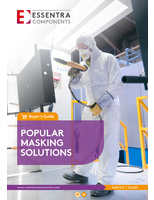Linde Expert to Discuss Next Generation Improvements for Optimizing Full-Field Development of Unconventional Oil and Gas Reservoirs
Share:
Murray Hill, New Jersey, U.S. - A Linde paper to be presented at the upcoming Center for Petroleum Geosystems Engineering Symposium on "Frontiers in Subsurface Energy" will provide discussion on how optimizing individual well treatments and scaling up to full field development ensures the best economics with the lowest water footprint when utilizing energized fracturing fluids. The two-day Symposium will be held at the University of Texas' Pickle Research Center in Austin, March 26-27.
At the Symposium, Robin Watts, Linde North America's Oil Gas Technology manager- Energy Solutions, will be speaking before a gathering of University of Texas faculty, professionals from the oil and gas industry, the U.S. Department of Energy and academia to brainstorm key future research issues for subsurface energy.
"With energized solutions, optimizing hydraulic fracturing treatment design brings the added benefit of EOR & IOR (Improved Oil Recovery) – the E-I-O R of energized fluids," says Watts in her paper entitled Energy Solutions: The EOR & IOR (E-I-O-R) for Energized Fluids for Hydraulic Fracturing.
Â
Watts says, "While significant strides have been made in the efficiency of drilling and completions during the past decade, the next generation of improvements will focus more on optimizing full field development. This optimization centers on the concept of the 3 E's: enhancing productivity (EUR), environmental footprint reduction, and improved economics of the field."Â Â
Case studies in unconventional reservoirs have shown that in well-designed hydraulic fracturing processes, energized fluids utilizing carbon dioxide (CO2) or nitrogen (N2) can reduce costs and improve well performance to achieve a lower unit cost of production. "From a field-wide perspective, based upon historic uses of CO2 and N2 for EOR, one can quickly discern how individual well stimulation treatments utilizing energized fluids can provide a leg up in the ultimate recovery of a reservoir," Watts says. Her paper will review case studies on the productivity and economics of various fracturing fluids in unconventional plays and then assess, in the Eagle Ford Formation in Texas, relative costs of stimulations with various fracturing fluids and compare the simulated production results for each of those fluids. Reducing the footprint of water can be significant through the use of safe, alternative fracturing fluids such as energized fluids.
"The bottom line," says Watts, "is that better options exist when you evaluate the play from a reservoir, field-wide development perspective so you can plan, develop, and invest to achieve optimal results."
Download the whitepaper Benefits of Energized Solutions in Fracturing and other whitepapers on www.lindeoilandgas.com
Linde North America is a member of The Linde Group. In the 2014 financial year, The Linde Group generated revenue of USD 17.9 bn (EUR 17.047 bn), making it the largest gases and engineering company in the world with approximately 65,500 employees working in more than 100 countries worldwide. The strategy of The Linde Group is geared towards long-term profitable growth and focuses on the expansion of its international business with forward-looking products and services. Linde acts responsibly towards its shareholders, business partners, employees, society and the environment – in every one of its business areas, regions and locations across the globe. The company is committed to technologies and products that unite the goals of customer value and sustainable development.
For more information, see The Linde Group online at www.linde.com
Contact:
Amy Ficon
Linde corporate communications
908-771-1491
amy.ficon@linde.com
Vinita Abraham
Linde Corporate Communications
908-771-1366
vinita.abraham@linde.com
Â




